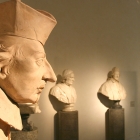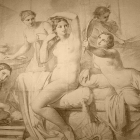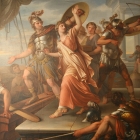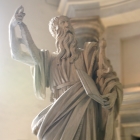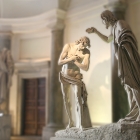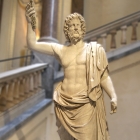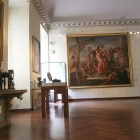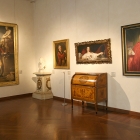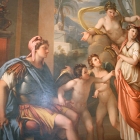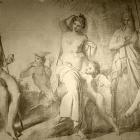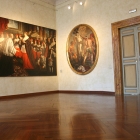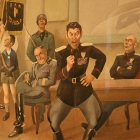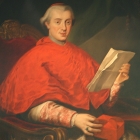Museo di Roma in Palazzo Braschi
Palazzo Braschi was built in the 18 century by the duke Luigi Braschi Onesti. Under the Napoleonic occupation of Rome, duke Braschi was declared mayor of the city. Donated to the Italian state, the palace was used by Benito Mussolini as his headquarters. The most important architectural piece of the palace is the monumental marble staircase with statues from the myth of Hercules. In the interior hall of the palace there are giant statues depicting the Baptize of the Lord. Just across the street, over Via Vittorio Emmanuel there is another museum, Museo Barracco, focused on Egyptology and Hellenistic art.
The collections of the museum try to follow Rome’s evolution from the Middle Ages to modern time. There are exposed pieces of furniture and even carriages, frescoes and mosaics, costumes, photographs and drawings from different time periods, books and paintings. There are over 160 fragments of mosaics and frescoes recovered from now demolished old houses in Rome. Even a part of the facade of the Senatorial Palace from the Capitoline Hill is here.
The most valuable paintings are signed by Andrea Sacchi, Pierre Subleyras, Marco Benefial, Pompeo Batoni, Pier Leone Ghezzi, Gavin Hamilton, Van Wittel, Vincenzo Camuccini.
The pottery collection includes over 2000 ceramic objects from late Middle Ages onward.
The most representative sculptures are signed by Gian Lorenzo Bernini, Bernardino Cametti, Francesco Mochi, Melchiorre Caffa and Alessandro Algardi.
And if very old photographs of the city don’t help you get a picture of Rome, you might take a look at the very vivid cartoons of Pio Pullini. They present humorously the turbulent two decades from the 1920s until after the war.
- Home Page
start page - Architecture
landmark buildings - Sacred architecture
places of worship - Nature
landscape photography - Concert
performing artists - Christmas
Santa Claus pictures
- Jooble
jobs for photographers - Escape
an out of control blog - Merry Christmas
The best organizer of Christmas parties - Astro photo
Eclipse hunting and astrological photography





